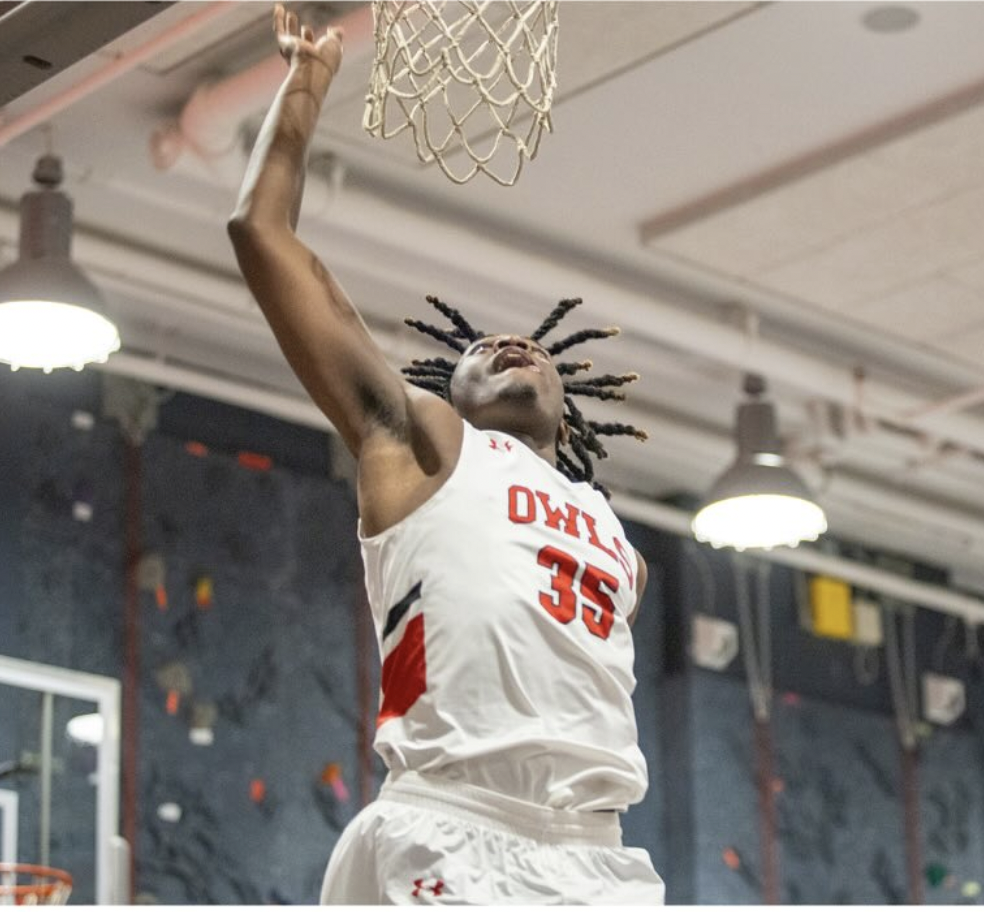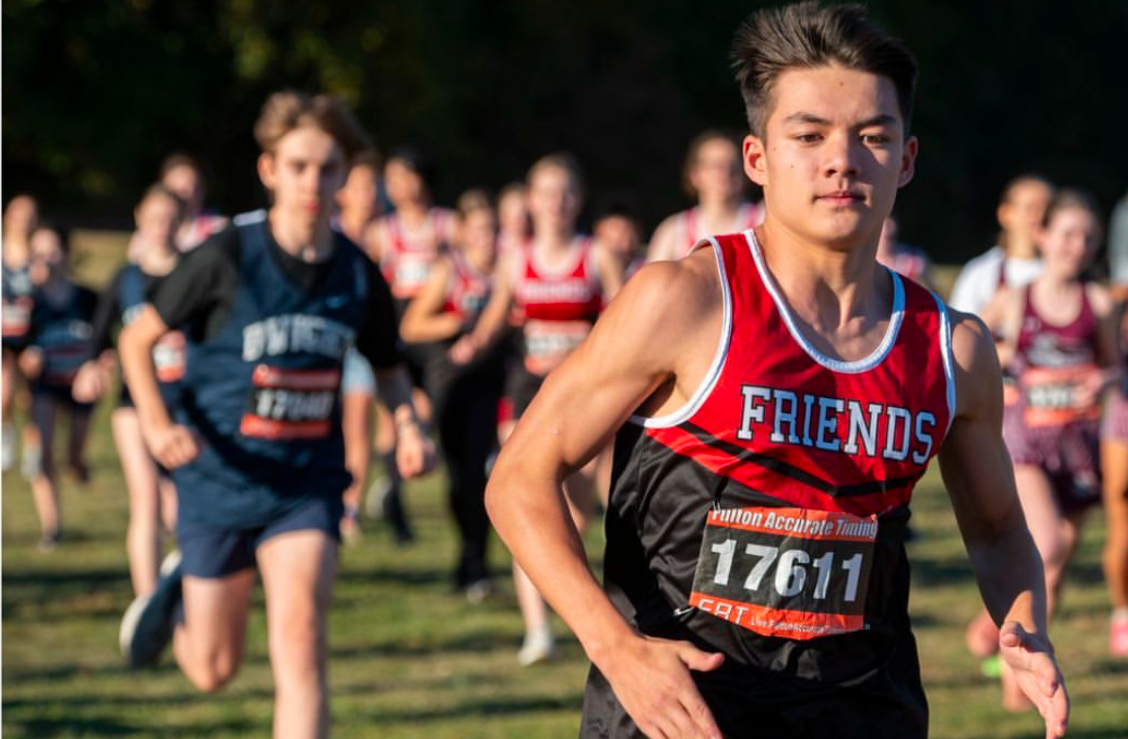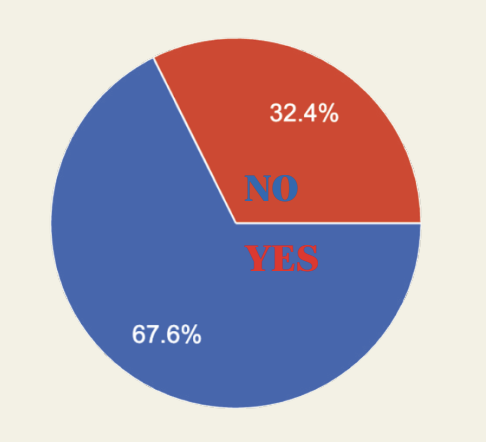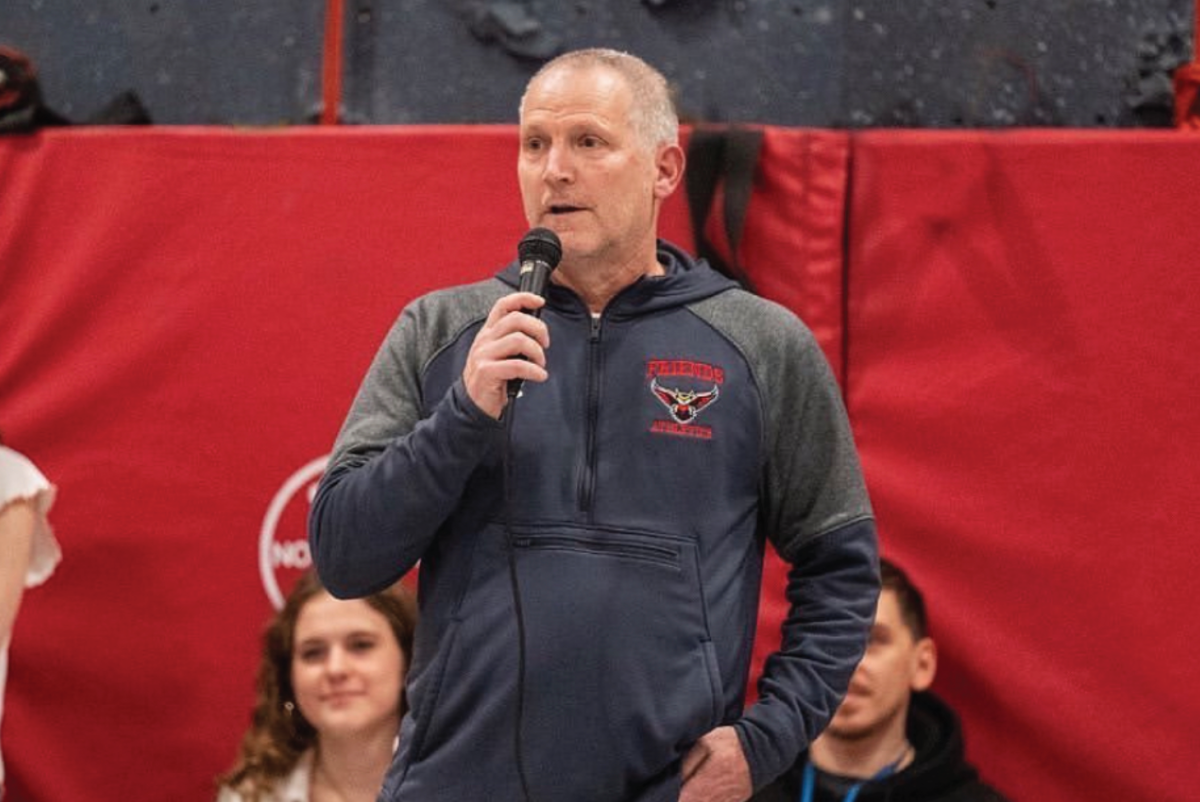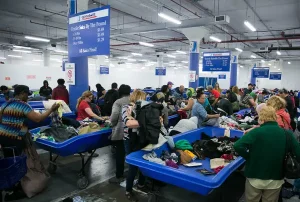Pandemic moves Winter Track season online, team grows
The Friends Seminary Track and Cross Country teams often practice at the John V. Lindsay East River Park Track, pictured above, when the weather permits. During the Winter Track season, the team attracted new members, but social distancing made in-person practices impossible.
April 30, 2021
The Friends Seminary Winter Track team had to make significant changes to adjust to a virtual environment this year. The team continued to practice and attract new members, but competitions were canceled because of safety risks posed by the pandemic.
In a regular season, there are about seven meets to provide an opportunity for students to compete against other schools, but this year students had to stay home. “It’s been frustrating not being able to do competitions, as that’s a driving motivation to get faster and get stronger,” team member Connor Zenker ’22 said.
A season without meets particularly affects Juniors and Seniors who are vying to secure college recruitment offers. Track and Cross Country coach Inese Petruna said that these athletes have been “stripped away of [an] opportunity for college.”
The team still managed to hold virtual practices two to three times a week, however, and hosted various workout routines.
“The goal is to keep everyone active,” Petruna said. She said typical practices consist of a warm-up, stretching, a run workout, and varying additional exercises. These workout plans are sent to the team ahead of practice, and athletes are encouraged to complete their workouts outdoors if possible.
Although the season brought difficulties, Petruna said there still have been some silver linings and opportunities for character building.
“Everyone becomes more responsible for their own workouts and learns self-motivation. So students are taking initiative,” Petruna said. With less instruction from coaches, players are held more responsible for their work ethic.
This year the team also saw an influx of new athletes.
“Prior to COVID-19 winter track was a very small team,” Zenker said. “At most, there would be about four people running in each meet.”
Zenker said the team has about doubled in size from last year, with students in almost every grade on the team.
Petruna still said that in-person practices are much more productive, even if they are socially distanced. She hopes that because Track is mainly an individual sport, it may be easier to accommodate in-person programming than it would be with more contact-oriented sports. The school has since confirmed that Upper School spring Athletics teams are all practicing in person, and that some teams will participate in limited scrimmages against other schools.
“It has not been ideal, but we play the cards we are dealt,” Petruna said.




